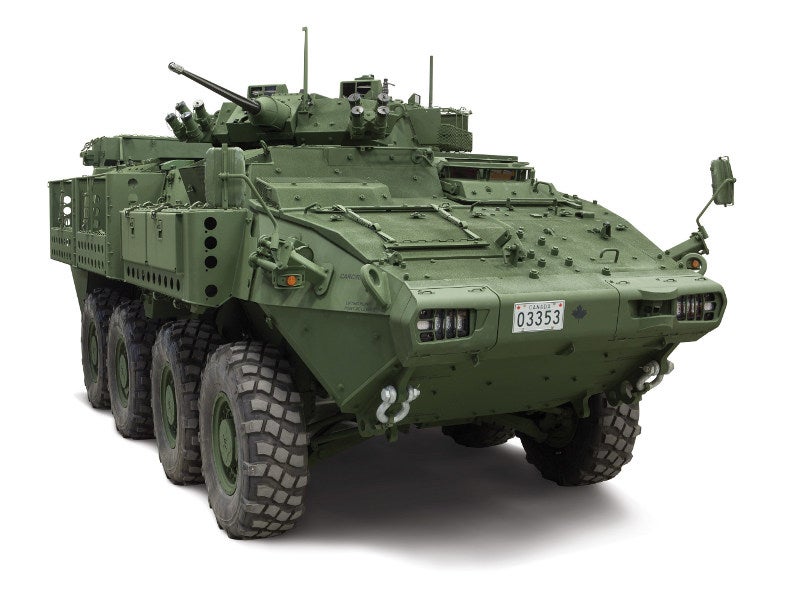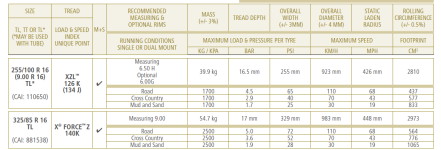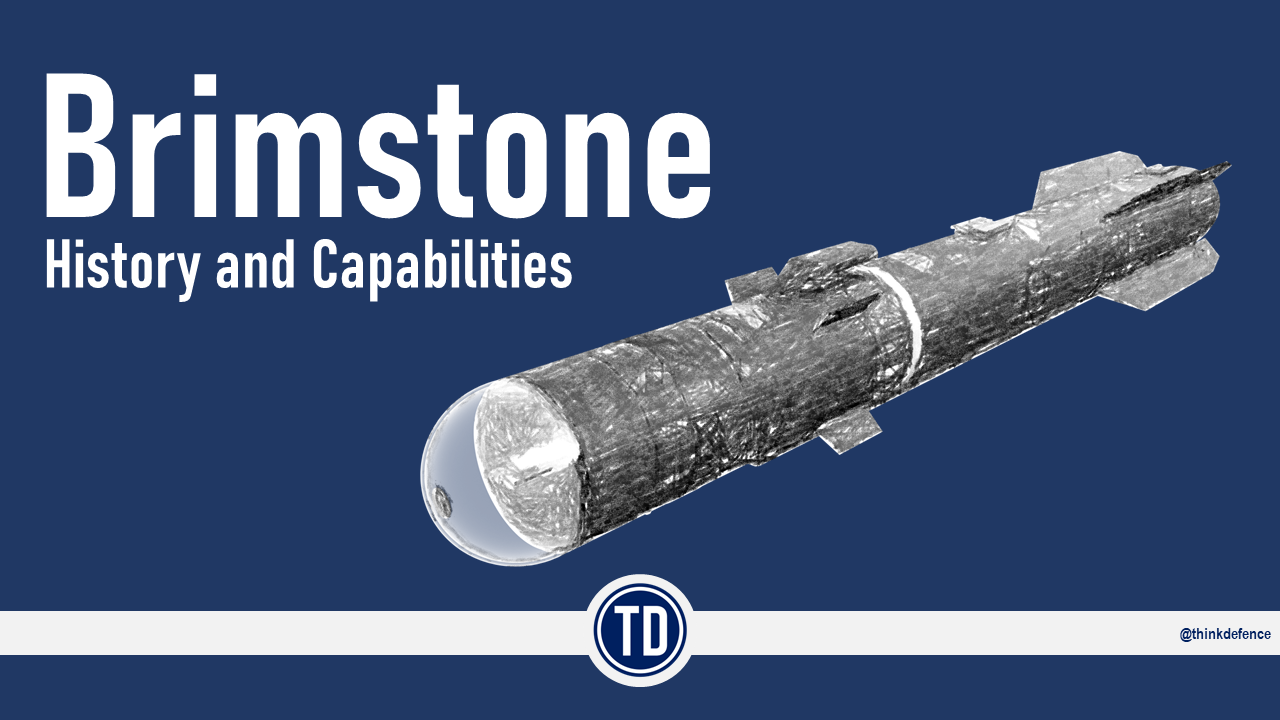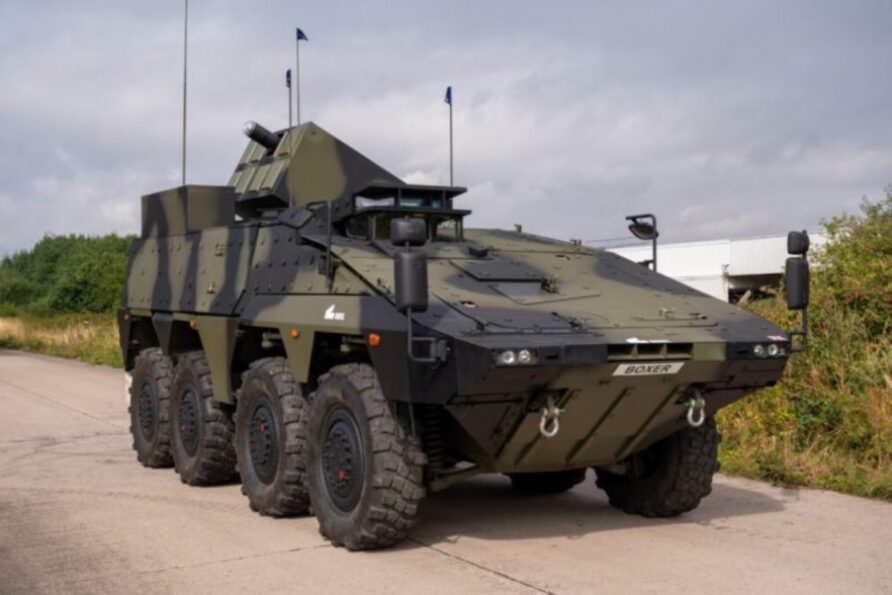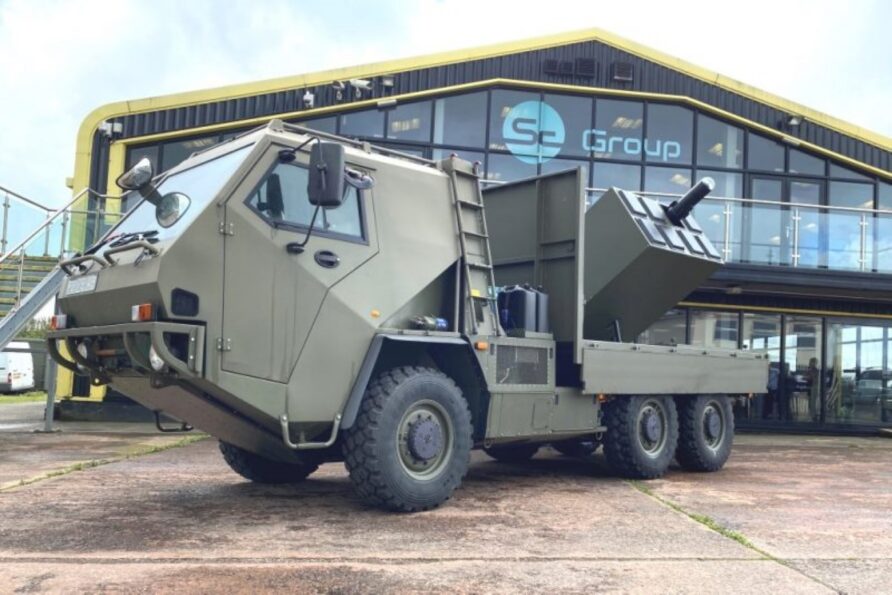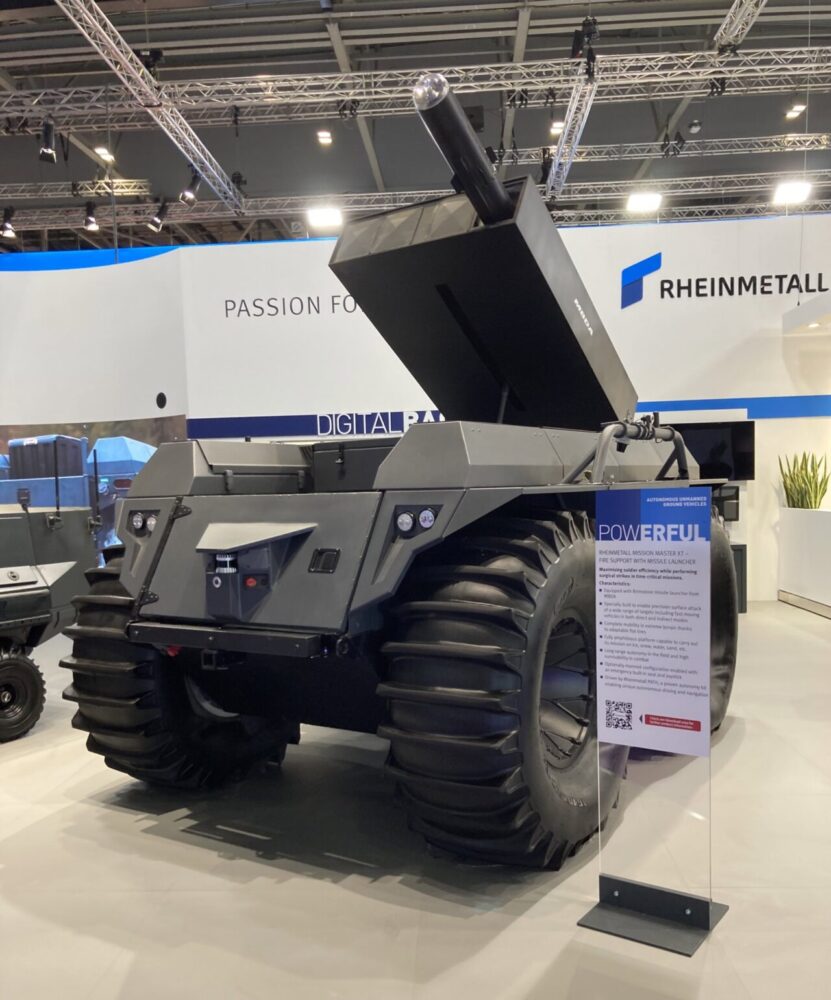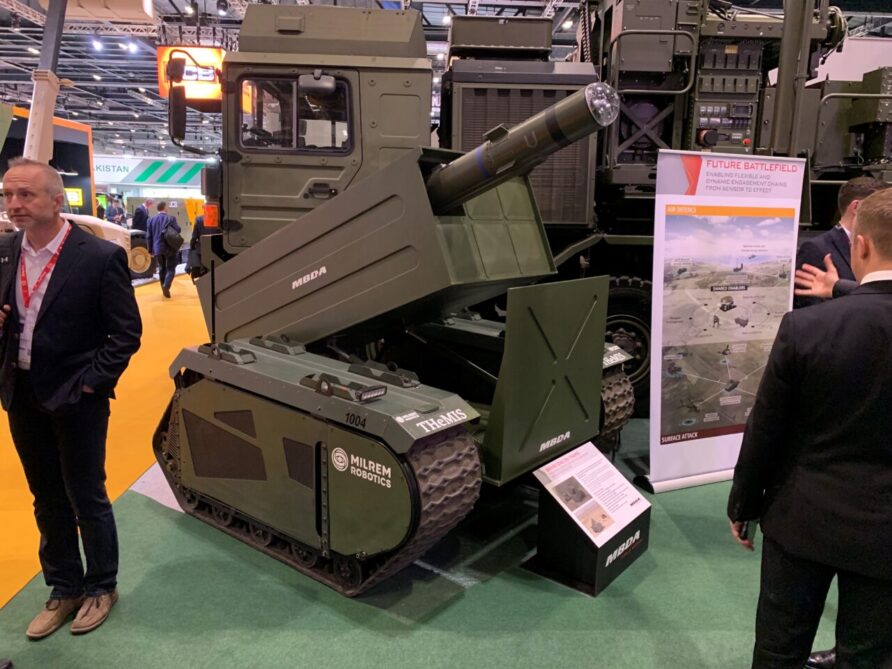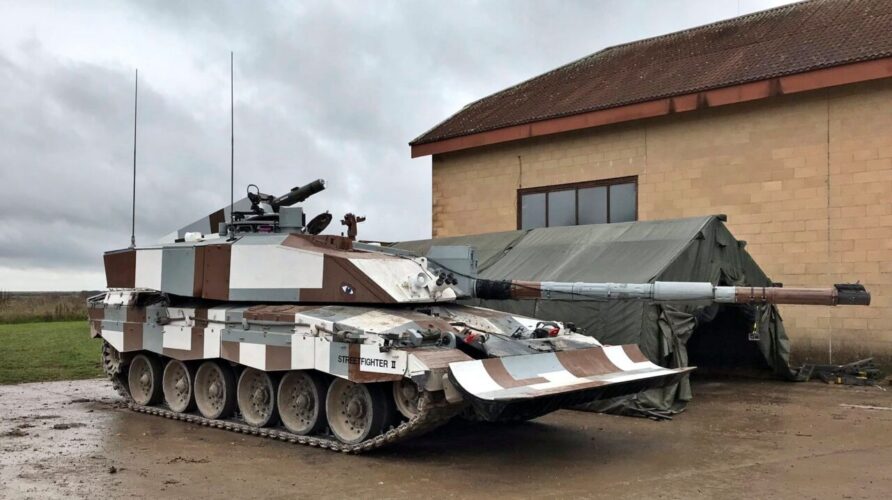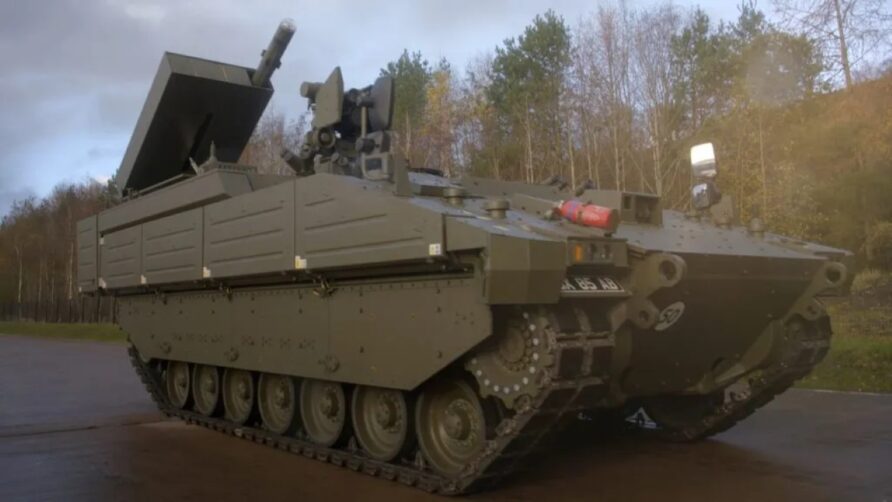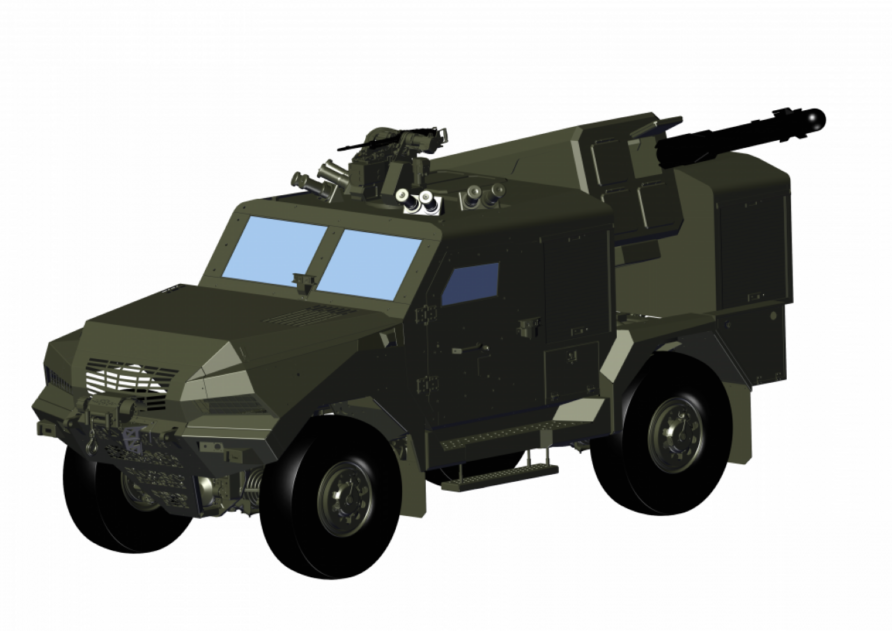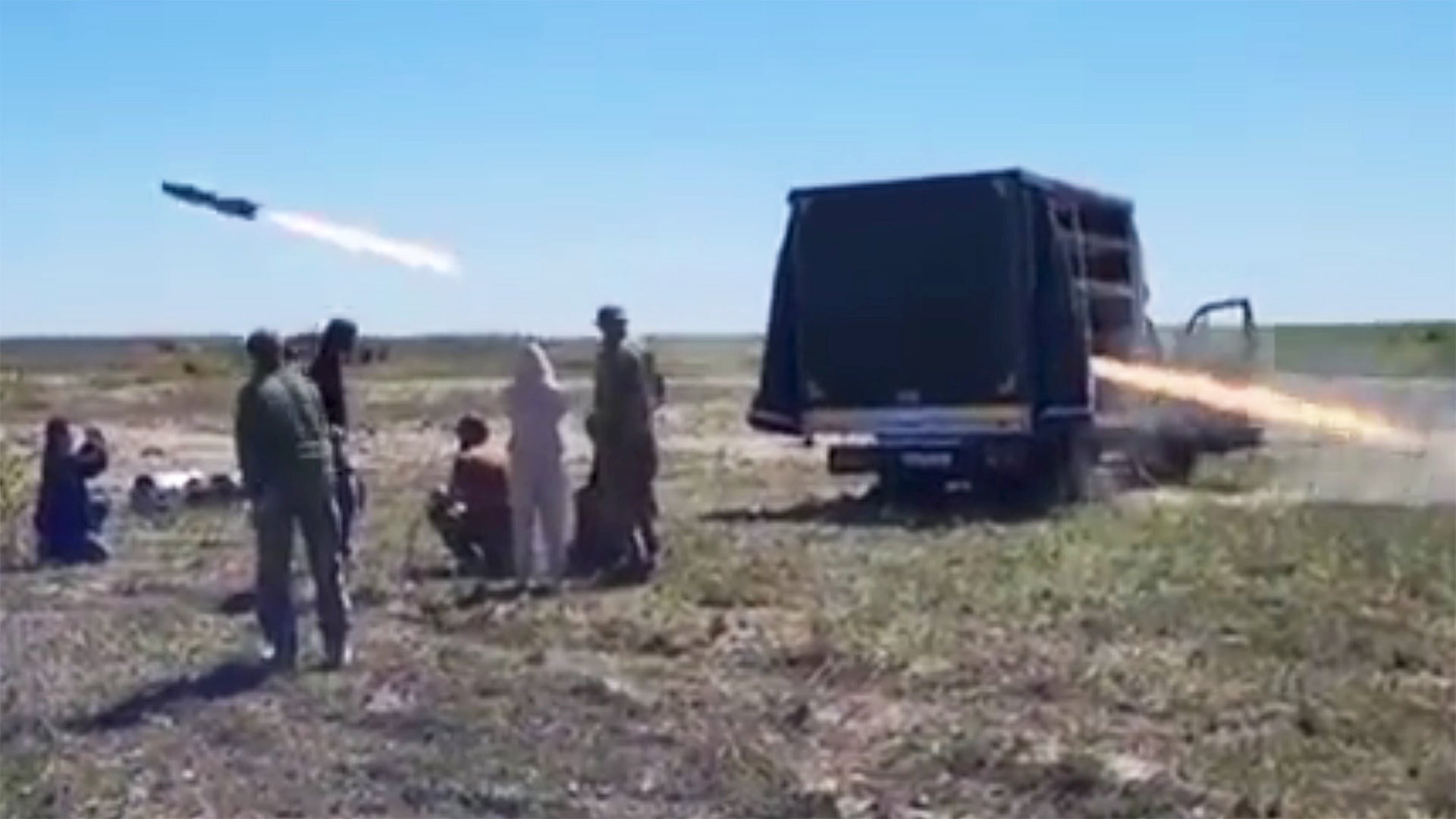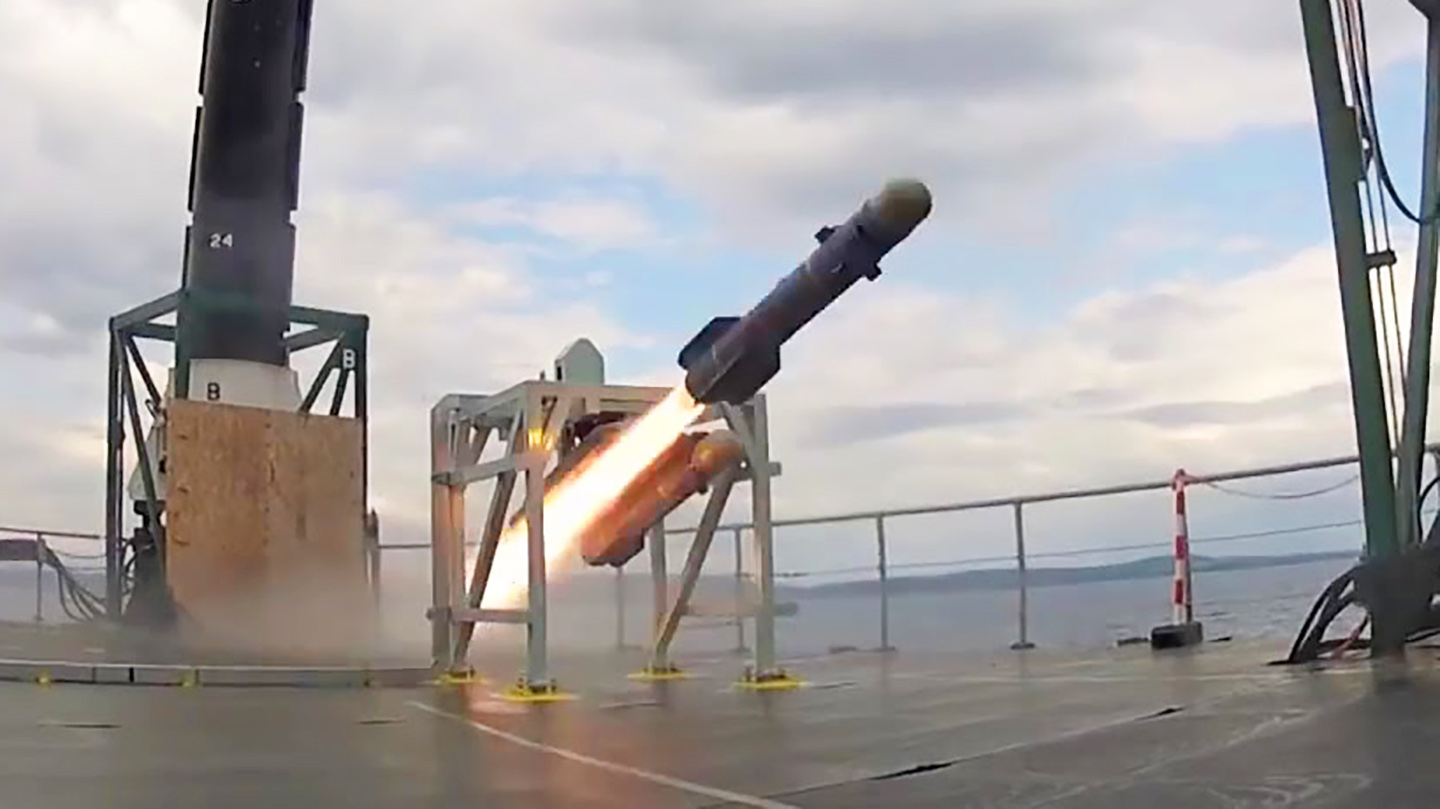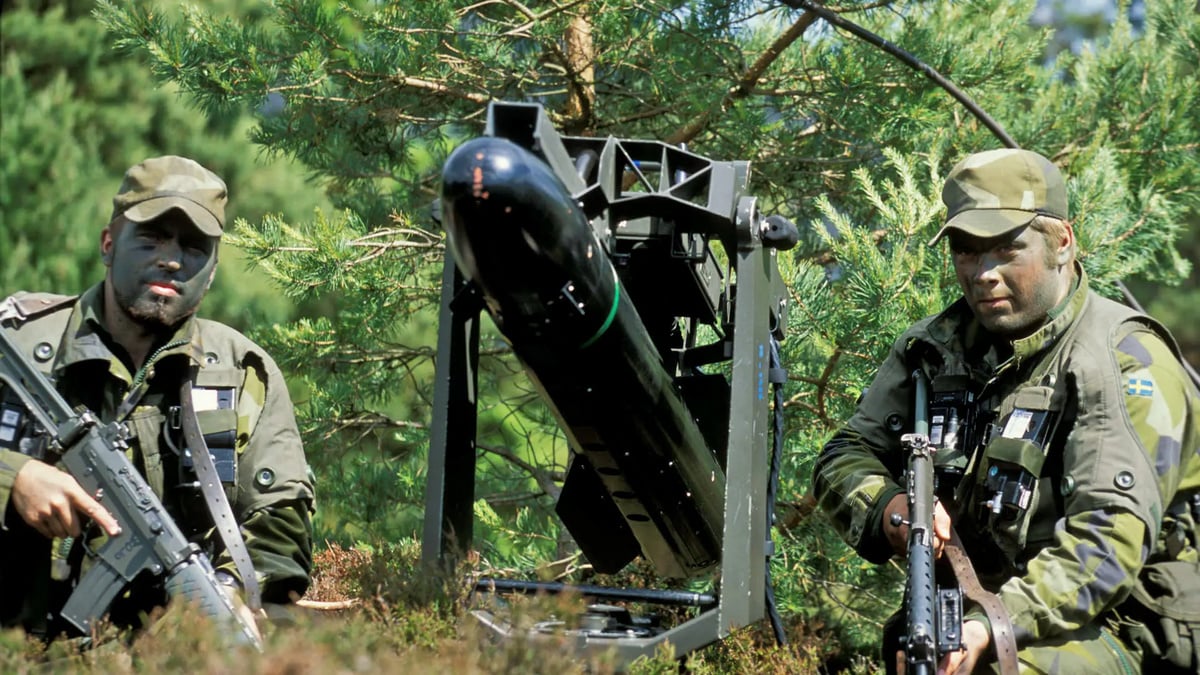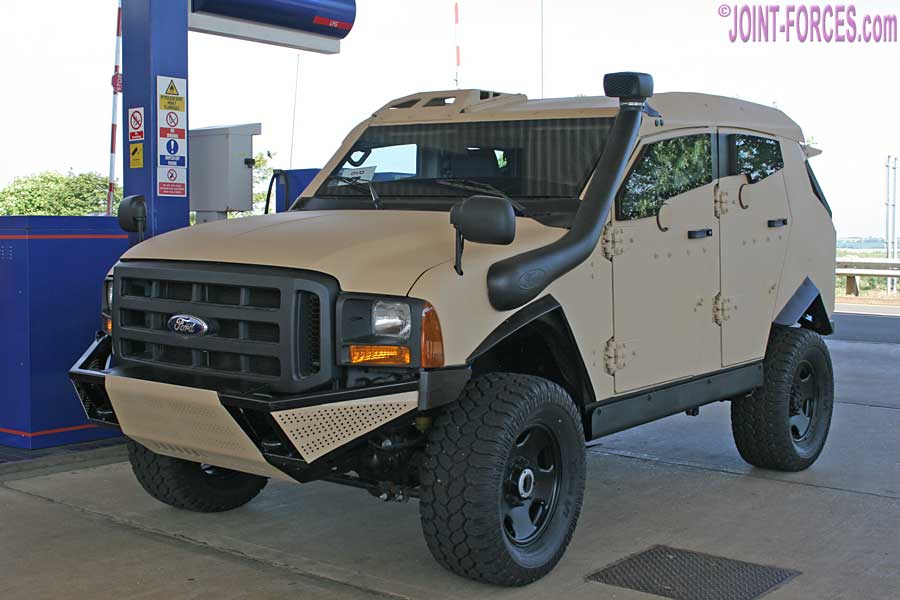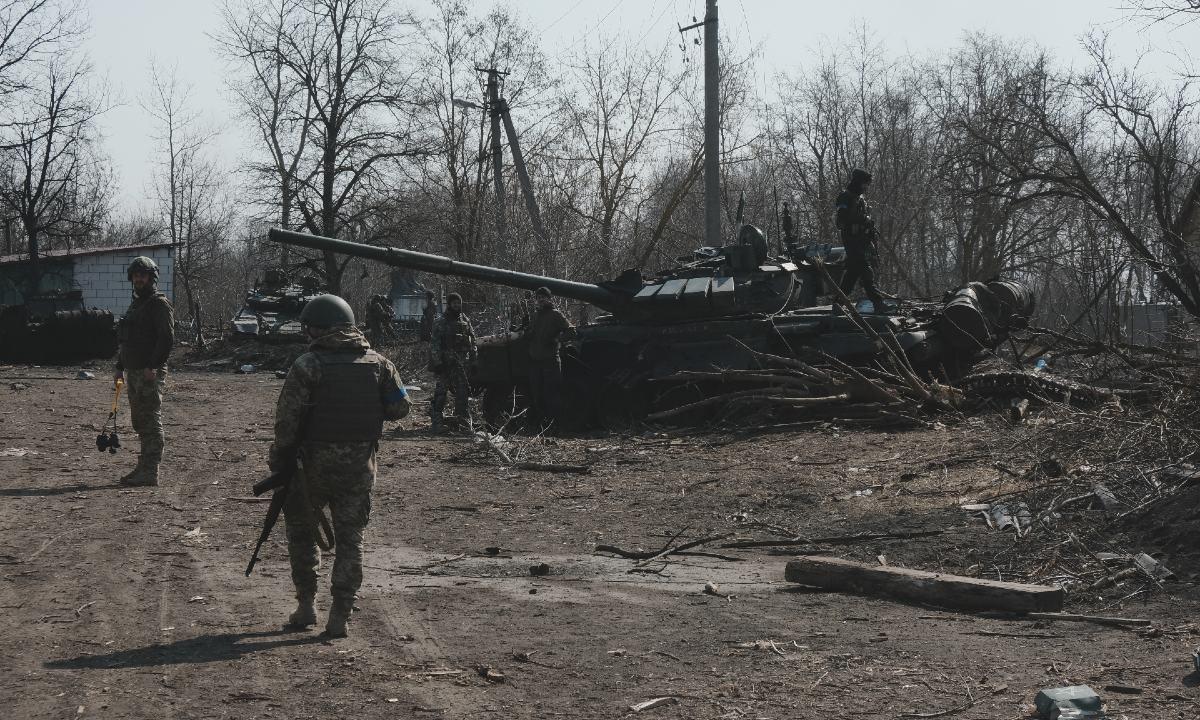Not really.
We have totally jumped out of the Infantry Vehicle discussion here.
No we haven't. A vehicle is simply a means of moving assets from point A to B.
What assets does the Infantry require to do its job?
What is the Infantry's job?
Where will it do it?
Where is it based?
How fast does it need to get to where it is needed?
What relationship does it have with other organizations, military and non-military, who are equipped with their own assets?
Who's co-ordinating the various activities and to what end?
The US has entrenched answers for all of those questions - largely driven by a massive sunk investment in assets.
Canada flutters in the breeze.
Javelin: Dismounted and IFV usage.
So it doesn’t necessarily need to be Inf, I’d say Inf, CAV, Cbt Eng, And even convoy security folks need that capability.
To what range?
Javelin buys you 3 km dismounted and 5 km mounted with no rotorcraft certification, no fixed wing and no naval application.
Hellfire/Brimstone I/JAGM buys you 8 km from a tripod, fixed rack, light vehicles, trucks, AFVs, rotorcraft, and naval applications with fixed wing launchers giving you a 20 km range. And all launchers can be manned, unmanned, optionally manned or remotely manned.
Brimstone 2, from the same launchers, buys you a 40 km (static launch) range to 60 km (high speed dynamic launch)
Brimstone 3/SPEAR 3/Land Precision Strike buys you an 80 to 130 km range but because it twice the weight of the earlier missiles (100 kg vs 50 kg) the lighter launch platforms are eliminated (the Ground Launch System requires a Sky Sabre, HIMARS or MRLS launcher).
Targeting of the Hellfire and Brimstone can be a laser designator on the launch vehicle, an off-axis third party designator, or autonomous MMW radar in fire and forget mode. It can be launched individually or in salvos and swarms are anticipated by 2028.
So who is going to use what missile, in what mode from what platform?
Spike NLOS: I see these as a Bde CAV and Bde Fire Support Squadron assets.
Spike NLOS is operating in the 25 to 32 km range band with rumours of 50 km in the works.
How does that compare with the Switchblade 600 and the Hero 120 Loitering Attack Munitions for range, cost and flexibility?
Spike NLOS is a weapon that can see. LAMs are observers that can kill.
Who is doing what?
What it the Area of Interest of the employer?
How would other services and branches employ the same weapon?
Are they cheap enough to buy in mass quantities and not have to worry about training budgets and losses?
Arty would have deep strike missiles - PrSM for the Rocket units (you still need to find those)
The Deep Strike Missles, the PrSMs require any of the following launchers: M270 MRLS, M141 HIMARS, M239 Chunmoo or the Norwegian Sea Can launcher.
Any of those launchers can launch
- 20 K33 131 mm unguided rockets, previously used on the K136 Kooryong, with a range of 36 km (22 mi) (40 total).
- Six KM26A2 230 mm rockets which are based on the M26 227 mm unguided DPICM rocket used in M270 MLRS vehicles operated by the South Korean Army, with a range of 45 km (28 mi) (12 total).
- Six 239 mm guided rockets with either high explosive penetration warheads, or cluster bombs with hundreds of bomblets, designed for the K239 Chunmoo with a range of 80 km (50 mi) (12 total).[6]
- M30 rockets carrying 404 DPICM M101 submunitions. Range: 15–92 kilometres (9.3–57.2 mi). 3,936 produced between 2004 and 2009, production ceased in favor of the M30A1.[52] The remaining M30 rockets has been converted at US Army to M31 (Unitary warhead) variant.[14][43]
- M30A1 rockets with Alternative Warhead (AW). Range: 15–92 kilometres (9.3–57.2 mi). GMLRS rocket that replaces the M30's submunitions with approximately 182,000 pre-formed tungsten fragments for area effects without unexploded ordnance.[54] Entered production in 2015.[52][43]
- M30A2 rockets with Alternative Warhead (AW). Range: 15–92 kilometres (9.3–57.2 mi). Improved M30A1 with Insensitive Munition Propulsion System (IMPS). Only M30 variant in production since 2019.[55]
- M31 rockets with 200 pounds (91 kg) high-explosive unitary warhead. Range: 15–92 kilometres (9.3–57.2 mi). Entered production in 2005. The warhead is produced by General Dynamics and contains 51 pounds of PBX-109 high explosive in a steel blast-fragmentation case.[56]
- M31A1 rockets with 200 pounds (91 kg) high-explosive unitary warhead. Range: 15–92 kilometres (9.3–57.2 mi). Improved M31 with new multi-mode fuze that added airburst to the M31's fuze point detonation and delay.[57]
- M31A2 rockets with 200 pounds (91 kg) high-explosive unitary warhead. Range: 15–92 kilometres (9.3–57.2 mi). Improved M31A1 with Insensitive Munition Propulsion System (IMPS). Only M31 variant in production since 2019.[55]
- M32 SMArt German GMLRS variant produced by Diehl Defence carrying 4 SMArt anti-tank submunitions and a new flight software. Developed for MARS II but has not been ordered yet and therefore not in service as of 2019.[58]
- ER GMLRS rockets with extended range of up to 150 km (93 mi).[59] Rockets use a slightly increased rocket motor size, a newly designed hull, and tail-driven guidance, while still containing six per pod. It will come in unitary and AW variants.[60] The first successful test flight of a ER GMLRS occurred in March 2021.[61] In early 2021, Lockheed Martin anticipated putting the ER into its production line in the fiscal year 2023 contract award and was planning to produce the new rockets at its Camden facility.[21] In 2022 Finland became the first foreign customer to order ER GMLRS.[62]
- M39 (ATACMS BLOCK I) missile with inertial guidance. The missile carries 950 M74 Anti-personnel and Anti‑materiel (APAM) bomblets. Range: 25–165 kilometres (16–103 mi). 1,650 M39 were produced between 1990 and 1997, when production ceased in favor of the M39A1. During Desert Storm 32 M39 were fired at Iraqi targets and during Operation Iraqi Freedom a further 379 M39 were fired.[52][43] The remaining M39 missiles are being updated since 2017 to M57E1 missiles.[63][64] The M39 is the only ATACMS variant which can be fired by all M270 and M142 variants.[65]
- M39A1 (ATACMS BLOCK IA) missile with GPS-aided guidance. The missile carries 300 M74 Anti-personnel and Anti‑materiel (APAM) bomblets. Range: 20–300 kilometres (12–186 mi). 610 M39A1 were produced between 1997 and 2003. During Operation Iraqi Freedom 74 M39A1 were fired at Iraqi targets.[52][43] The remaining M39A1 missiles are being updated since 2017 to M57E1 missiles.[63][64] The M39A1 and all subsequently introduced ATACMS missiles can only be used with the M270A1 (or variants thereof) and the M142.[66]
- M48 (ATACMS Quick Reaction Unitary (QRU) missile with GPS-aided guidance. The missile carries the 500 pounds (230 kg) WDU-18/B penetrating high explosive blast fragmentation warhead of the US Navy's Harpoon anti-ship missile. Range: 70–300 kilometres (43–186 mi). 176 M48 were produced between 2001 and 2004, when production ceased in favor of the M57. During Operation Iraqi Freedom 16 M48 were fired at Iraqi targets a further 42 M48 were fired during Operation Enduring Freedom.[52][43] The remaining M48 missiles remain in the US Army and US Marine Corps' arsenal.
- M57 (ATACMS TACMS 2000) missile with GPS-aided guidance. The missile carries the same WDU-18/B warhead as the M48. Range: 70–300 kilometres (43–186 mi). 513 M57 were produced between 2004 and 2013.[52][43]
- M57E1 (ATACMS Modification (MOD) missile with GPS-aided guidance. The M57E1 is the designation for upgraded M39 and M39A1 with re-grained motor, updated navigation and guidance software and hardware, and a WDU-18/B unitary warhead instead of the M74 APAM bomblets. The M57E1 ATACMS MOD also includes a proximity sensor for airburst detonation.[63] Production commenced in 2017 with an initial order for 220 upgraded M57E1.[52][43] The program is slated to end in 2024 with the introduction of the Precision Strike Missile (PrSM), which will replace the ATACMS missiles in the US arsenal.
- The Precision Strike Missile (PrSM) is a new series of GPS-guided missiles, which will begin to replace ATACMS missiles from 2024. PrSM carries a newly designed area-effects warhead and has a range of 60–499 kilometres (37–310 mi). PrSM missiles can be launched from the M270A2 and the M142, with rockets pods containing 2 missiles. As of 2022 the PrSM is in low rate initial production with 110 missiles being delivered to the US military over the year. PrSM will enter operational service in 2023.[67][52][68]
- Boeing and Saab Group conducted three successful GLSDB tests in February 2015. The system utilizes an existing weapon paired with a stockpiled rocket motor, while maintaining the loadout on a rocket artillery system. Unlike traditional artillery weapons, the GLSDB offers 360-degree coverage for high and low angles of attack, flying around terrain to hit targets on the back of mountains, or circling back around to a target behind the launch vehicle. The GLSDB has a range of 93 mi (150 km), or can hit targets 43 mi (70 km) behind the launch vehicle.[4][5][6] In a 2017 demonstration, the GLSDB engaged a moving target at a distance of 62 mi (100 km). The SDB and rocket motor separated at altitude and the bomb used a semi-active laser (SAL) seeker to track and engage the target.[7] A 2019 test extended this range to 81 mi (130 km) against a target at sea.[8]
- Due to the decision to recapitalise the M270 fleet and increase their numbers in line with Integrated Review 2021 outcomes, there are no plans to procure High Mobility Artillery Rocket Systems (HIMARS). The recapitalised M270 MLRS platform will fire: Guided Multiple Launch Rocket System (GMLRS); Extended Range GMLRS (ERG); the Precision Strike Missile (PrSM); and the Land Precision Strike (LPS) missile.
- The Land Precision Strike (LPS) Project is developing momentum fast; it will be fired from the upgraded MLRS to leverage investment in that platform, achieve efficiencies, and deliver the vision of ‘One Launcher, Many Payloads’. This will be a transformational capability from 2028 to counter mobile, fleeting, armoured, and high value threats out to at least 80km.
Do we want to get into the systems we can put into a sea can (ie everything that you can fit into a Mk41 VLS, plus the MRLS/HIMARS family, plus JSMs, plus unmanned drones (Makis and Valkyries)? Or the fact that the Brits are looking at their CAMM/CAMM-ER Sky Sabre Vehicles launching Brimstone missiles, along with the M270s, just the same way their Stormers are launching both Starstreak HVM AD missiles and Martlett multi-mission missiles (Both of which are guided by the operators by preference to the Fire and Forget missiles preferred by the US).
No disagreement, I’m just not seeing the need for a Bde missile past 40km (the LocMart upgraded seeker Spike NLOS has a slightly longer effective range.
When Russian forces invaded neighboring Ukraine on February 24, one of the first places they crossed into was the northeastern Sumy oblast. Thirty-nine days later, after intense fighting across the […]

mwi.usma.edu
3 km companies in the defence.
20 km brigades
20 to 50 km exploitation runs in Kharkiv by motorized infantry and light cavalry.
And if Canada aspires to lead a Multi National Division, with out offering up too much blood then it must offer up treasure and fill in the support roles - I suggest that that would mean supplying something like a British Deep Strike Recce Brigade or a USMC Littoral Regiment where the emphasis is in supplying coverage. We should be looking at supplying support brigades to add to allied divisional and corps assets.
Div Arty and higher gets PrSM for HIMARS systems as needed.
Agreed
You start to over complicated when you look immediately to add to RCAF and RCN.
No. Because they already have solutions the army can use and they and the army are too small not to consider engaging with each other.
Mortars are Infantry, so if you look at a 120mm Mortar for Inf, there needs to be rethinking of FSCC levels.
The skills necessary for employing mortars effectively are not common to those of the rifleman. They are common to the gunner's trade.
The argument that the infantry needs mortars because the guns may not be there when needed indicates a problem in the relationship between the guns and the rifles that needs to be fixed. A similar problem was the position of the FOO. One of the advantages of the Battery supplying the FOOs was it gave the Battery a direct, personal stake, someone they messed with was at risk, in the fate of the Battalion they were supporting.
AT shouldn’t be Arty full stop.
Get away from the old direct fire AT gun concept.
So what do you do with weapons that can precisely eliminate a squadron (yours or ours) of tanks from 100 km that can be delivered from a truck, a boat, a UAS, a helicopter or a prop or a jet?
When you organize around the platform then task co-ordination becomes hard. When you organize around task then platform coordination becomes hard.
AD: MANPADS needs to be all arms options, linked to a Bde ADAM Cell, but you don’t need to be a bird gunner.
I would prefer to keep the Bird Gunners to be for beyond point defense systems.
LMRAD missile systems and gun systems that are vehicle and container based and the C2 for the air war would be where I would focus Bird Gunners - even if it’s a MSHORAD setup on an Ultra Light vehicle for Light Forces.
Fair. I would suggest a similar organization for Anti-Tank forces.
You have a 6km system with Javelin.
Excellent - a demonstrated continuation of a trend
Dispersion, dilution and engagement at increasing ranges.
You can add Hellfire/Hellfire Longbow but next gen Javelin offers the Longbow NLOS linkage, so other than RCAF usage on MALE and a potential AH system the Hellfire options don’t really provide a significant gain, as we have seen concern already on serving members that 6km is already worrying for them for Bn level engagement.
I would suggest that the problem then is the C2/3/4/5/I structures need to be revisited to take into account a larger portion of the force operating in dispersed mode.
Because you look at it from a more historical range band lens.
No. I absolutely do not. I reference range bands and historical structures and ask if the historical structures are compatible with modern range requirements.
I think Ukraine has shown that Canada’s divestment of AD and other Arty systems was exceptionally foolish.
There need to be a lot more than 1,500 Reg Force PY’s for AD.
Agreed and agreed.



